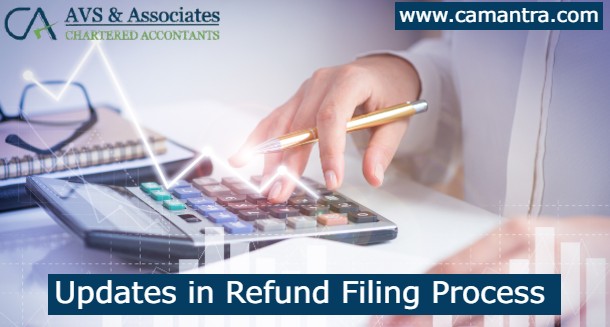The GSTN implemented significant updates to the refund filing process, effective from May 8, 2025. These changes are designed to streamline procedures and reduce complexities for taxpayers, especially those involved in exports and supplies to Special Economic Zones (SEZs). Here’s a detailed overview of the changes and their implications for taxpayers.
Applicable Refund Categories
The revised procedure applies to the following three categories of refunds:
- Export of services with payment of tax
- Supplies made to SEZ units or SEZ developers with payment of tax
- Refund by supplier of deemed exports
These categories are widely used by exporters and businesses handling zero-rated supplies. The changes are aimed at improving efficiency and simplifying the refund process.
Key Changes Introduced
1. Elimination of Tax Period Selection
One of the most notable changes is the removal of the requirement to specify a tax period (‘From’ and ‘To’) when filing a refund application. Previously, taxpayers had to indicate the time frame for which the refund was being claimed.
Now, taxpayers can directly select the relevant refund category and click on the “Create Refund Application” button to proceed. This reduces procedural delays and simplifies the application process.
2. Mandatory Filing of GST Returns
Taxpayers must ensure that all applicable GST returns—such as GSTR-1 and GSTR-3B—are filed up to the date of the refund application. Failure to comply with this requirement will render the taxpayer ineligible to apply for a refund.
This change promotes transparency and ensures that refunds are processed based on accurate and current records.
3. Shift from Tax Period-Based to Invoice-Based Filing
The refund process has moved from tax period-based filing to invoice-based filing. Rather than filing refunds based on a specific month or quarter, taxpayers must now upload eligible invoices to claim refunds.
This change applies specifically to the following statements:
- Statement 2 – Export of Services with Payment of Tax
- Statement 4 – Supplies to SEZ with Payment of Tax
- Statement 5B – Deemed Exports (Application by Supplier)
The move to invoice-based claims enhances accuracy, minimizes errors, and prevents duplicate submissions.
4. Invoice Locking Mechanism
Once invoices are uploaded as part of a refund application, they become locked and cannot be edited or reused in other refund claims. The lock remains in effect unless:
- The refund application is withdrawn, or
- A deficiency memo is issued by the tax authorities.
This mechanism helps prevent multiple claims for the same invoice and improves control over refund validations.
Conclusion
The updates introduced by GSTN mark a significant step toward simplifying and digitizing the refund process for exporters and SEZ-related businesses. By removing tax period selection, enforcing return filings, adopting invoice-based claims, and introducing invoice locking, the new process ensures greater efficiency, accuracy, and accountability.
Taxpayers should carefully review these changes and update their compliance practices accordingly. Staying informed and proactive will help ensure timely and successful refund claims under the revised GST framework.
For ongoing updates and expert guidance on GST compliance, refer to official GSTN communications or consult with your tax advisor.

